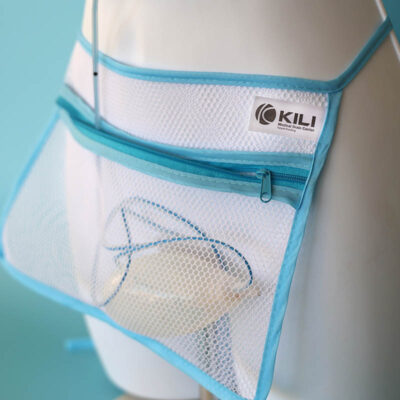The importance of Jackson Pratt drains
Following surgery, you may have drainage from the wound that needs to be removed to prevent fluid, hematoma, and/or abscesses from forming. Mostly, the expelled fluid is a combination of mucus and small blood clots. It is critical to keep the surgical area free of fluid and a Jackson Pratt drain is designed to simply suction fluids away.
How the Jackson Pratt drain does its job
A small drainage line is installed during the final portion of surgery. One end is secured to your skin using sutures, and the other is firmly attached to a lemon-sized pliable bulb. The bulb creates suction when the air is squeezed out of the bulb and a small air cap is tightened. Really, a very simple concept and very effective at keeping wound areas dry and healthy.
What to do with fluid inside the Jackson Pratt bulb
Following surgery, you will need to empty the bulb on a schedule recommended by your discharge team. Firmly hold tubing near the insertion site (close to your skin) and using the index finger and thumb, squeeze the tubing. Slide your index finger and thumb down the tube toward the bulb, moving fluid in the tube to the bulb. Now, uncap the bulb and pour the contents into a measuring receptacle. Calculate how many ccs or mls of fluid were drained and record the amount on a data log. Dispose of the fluid in the toilet. Once the bulb is empty, squeeze the bulb while replacing the cap. This should create suction and the bulb should look indented.
Pay attention to fluid color and measurements
Drainage is bloody following surgery, but as time passes it should become straw-colored, then clear. Discharge should never look cloudy or like pus. If it does, contact your physician. The amount of fluid will decrease as time passes. Your surgeon will monitor the fluid output, and once it’s reached a certain level – drains will be removed.
Securing Jackson Pratt drains and drain tubes
Discharge nurses usually provide safety pins and recommend that a patient slip the bulb’s plastic loop over the pin and attach to gown or clothing. If you choose this method, be careful to remember bulbs are attached when changing gowns or clothing. A safer and painless way to secure drains is to use management tool like KILI Medical Drain Carrier. It’s apron-like construction easily holds the bulbs and provides easy access when drains need to be emptied. And because it’s made of mesh material, it can be worn when bathing. More information is available here.
How long you should expect to wear the drains
That’s entirely up to your surgical team, based on your rate of recovery. Some procedures require drains be worn for 24 hours or less. However, more intrusive surgeries are going to take longer to heal, and could mean drains will remain with the patient for 2 to 4 weeks, if not longer.
TIPS
- The first time you empty your drains, have someone there to help you. You will likely find it difficult to move around and remove/replace the bandages, etc.
- Don’t keep the bulb in a shirt pocket. This is too high, and the fluid won’t drain properly, slowing your healing time. The bulb should be kept below the incision site.
- Don’t touch the spout opening or the plug with your hands or anything else. You don’t want germs getting inside the bulb.

